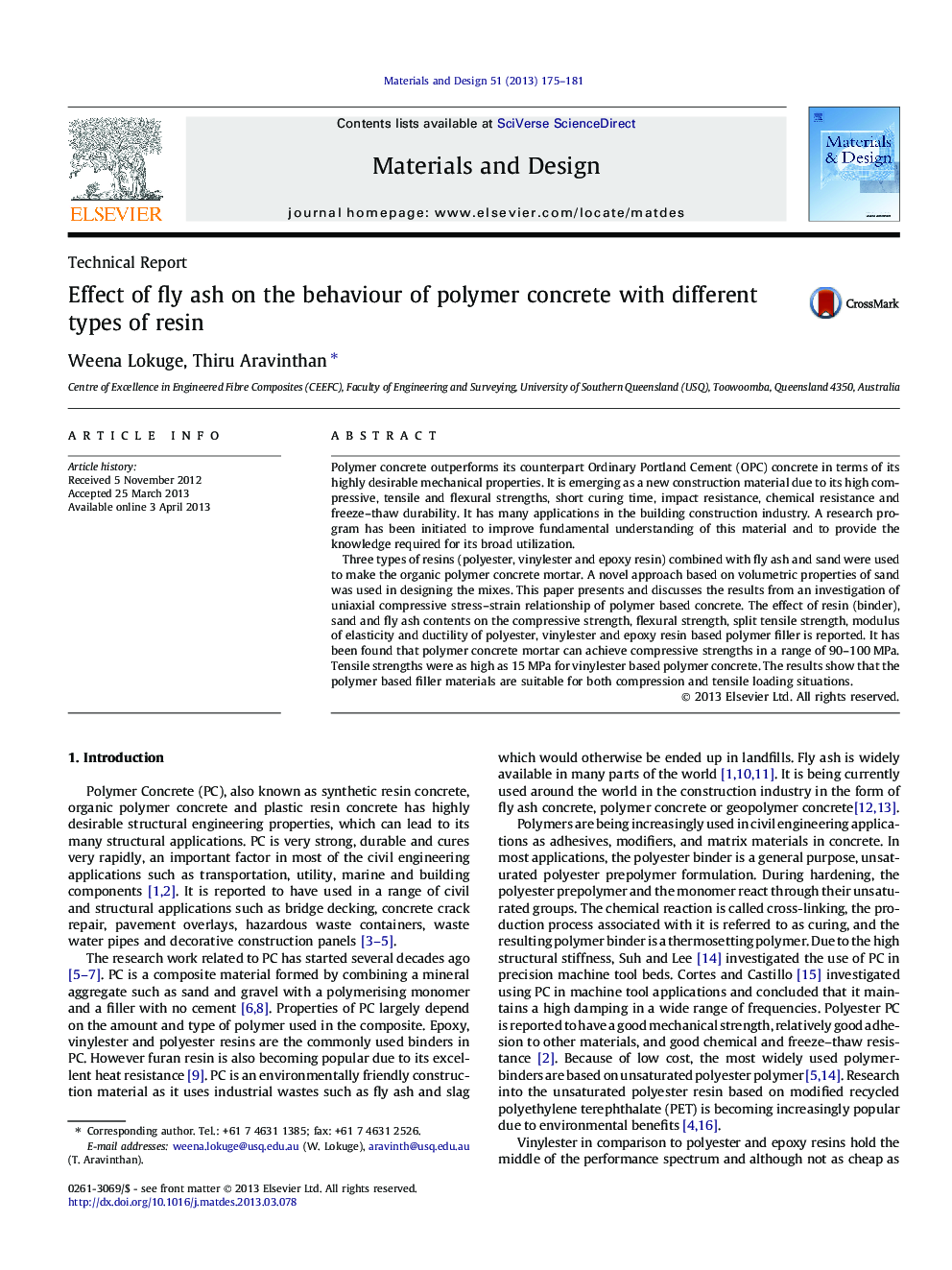| Article ID | Journal | Published Year | Pages | File Type |
|---|---|---|---|---|
| 829825 | Materials & Design (1980-2015) | 2013 | 7 Pages |
•Mechanical properties of three types of polymer concrete with fly ash were investigated.•Compressive strength of polymer concrete increased with increasing fly ash amount.•Tensile and flexural strengths have decreasing trend with increasing fly ash.•With increasing fly ash content, the ductility of polymer concrete was decreased.
Polymer concrete outperforms its counterpart Ordinary Portland Cement (OPC) concrete in terms of its highly desirable mechanical properties. It is emerging as a new construction material due to its high compressive, tensile and flexural strengths, short curing time, impact resistance, chemical resistance and freeze–thaw durability. It has many applications in the building construction industry. A research program has been initiated to improve fundamental understanding of this material and to provide the knowledge required for its broad utilization.Three types of resins (polyester, vinylester and epoxy resin) combined with fly ash and sand were used to make the organic polymer concrete mortar. A novel approach based on volumetric properties of sand was used in designing the mixes. This paper presents and discusses the results from an investigation of uniaxial compressive stress–strain relationship of polymer based concrete. The effect of resin (binder), sand and fly ash contents on the compressive strength, flexural strength, split tensile strength, modulus of elasticity and ductility of polyester, vinylester and epoxy resin based polymer filler is reported. It has been found that polymer concrete mortar can achieve compressive strengths in a range of 90–100 MPa. Tensile strengths were as high as 15 MPa for vinylester based polymer concrete. The results show that the polymer based filler materials are suitable for both compression and tensile loading situations.
